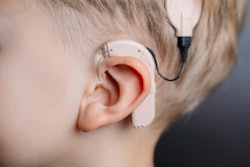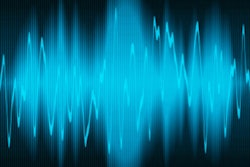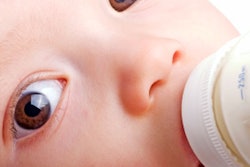
Even with ear protection, increased acoustic noise from a 3-tesla MRI scan can cause a temporary reduction in a patient's ability to hear. But the good news is there are no long-lasting adverse effects, according to a study published in the February issue of Radiology.
Researchers in China found that healthy volunteers experienced a statistically significant increase in their hearing threshold -- the level at which they could detect sound -- 20 minutes later, despite the use of earplugs and foam pads during the scan. A follow-up hearing test almost one month later, however, showed no signs of damage, as their hearing returned to normal.
"The hearing threshold was restored to normal level at day 25 after the MRI examination, [indicating] a temporary threshold shift," wrote lead author Chao Jin, PhD, and colleagues from Xi'an Jiaotong University. "This finding further supports the importance of appropriate hearing protection in clinical practice. Furthermore, developing protective apparatus with higher level of noise attenuation is desired for reducing the potential risk of hearing loss."
Acoustic noise levels
It's no secret that MRI scans are noisy; the level is a well-recognized concern for patients and clinicians who staff the imaging suite throughout the day. Previous studies have found that the sound pressure level of a 3-tesla MRI device can reach 130.7 decibels (dB). The recommended limit for acoustic noise levels is 115 dB to prevent or minimize potential hearing loss.
Evidence of patients experiencing some degree of temporary hearing loss after an MRI scan is not uncommon. A 2002 study by Radomskij et al found that patients' cochlear function can be affected after a 20-minute MR examination. Govindaraju et al in 2011 described a patient who experienced temporary hearing issues after a 41-minute 3-tesla scan -- even though the person was wearing earplugs for protection.
To further investigate the short- and long-term risks, Jin and colleagues consecutively enrolled 26 healthy young adult volunteers (mean age, 22.1 years; range, 18-26 years) in the prospective study between January 2016 and March 2016 (Radiology, February 2017, Vol. 286:2, pp. 602-608). All scans were performed on a 3-tesla device (Signa HDxt, GE Healthcare) with an eight-channel head coil.
The MR imaging protocols included six clinical-research neuroimaging sequences:
- 3D T1-weighted fast spoiled gradient-recalled echo (FSPGR)
- T2-weighted periodically rotated overlapping parallel lines with enhanced reconstruction (PROPELLER)
- Diffusion-tensor imaging (DTI)
- Diffusion kurtosis imaging (DKI)
- 3D T2 multiecho gradient-echo pulse sequence (MEGRE)
- 3D blood oxygenation level-dependent imaging (BOLD)
The entire MRI scan took approximately 60 minutes, with the MRI sequences accounting for approximately 51 minutes and the remainder of the time devoted to preparation and imaging intervals. Foam earplugs were placed in the subjects' ear canals and sponge mats were positioned between the head and the coil to restrict head motion.
To ensure that all participants had normal hearing, an initial automated auditory brainstem response (ABR) hearing test was performed within the 24 hours before the first MRI scan. The researchers then conducted a second hearing test within 20 minutes after the MRI scan to determine if there were any short-term side effects. A third hearing test was done 25 days later to assess any long-term adverse effects.
From the ABR test, the researchers were able to calculate a person's hearing threshold -- that is, the level at which the ear can begin to detect sound. The louder the noise a person is exposed to, the more the hearing threshold is likely to increase, affecting his or her ability to detect quiet sounds.
Acoustic noise levels were recorded with a nonmagnetic microphone, which was placed inside the bore to obtain a baseline noise level with no patient in the scanner and later with a patient on the table. For each MR imaging sequence, the researchers measured sound pressure levels at their peak and on a continuous basis to calculate the mean levels.
During the MRI scans, peak sound pressure levels at the center of the scanner with a subject in the bore ranged from 118.2 dB with the DKI sequence to 123.2 dB with 3D T2 MEGRE. The mean noise levels ranged from 103.5 dB to 111.3 dB, which is close to the recommended limit of 115 dB.
When they compared the subjects' hearing capabilities before the MRI scan and 20 minutes after it, the researchers noticed a significant increase (5.0 dB ± 8.1) in their hearing thresholds. On the other hand, there was a significant reduction (6.3 dB ± 4.0) in hearing threshold among the subjects 25 days after the MRI scan, meaning their hearing returned to normal levels.
| Change in hearing threshold after MRI scans | ||||
| Prior to MRI | 20 minutes after MRI | 25 days after MRI | p-value | |
| Left ear | 15 dB | 20 dB | 12.5 dB | 0.013* |
| Right ear | 12.5 dB | 20 dB | 12.5 dB | 0.001* |
Based on the differences in the three hearing tests, Jin and colleagues determined that hearing protection, such as earplugs and sponge mats, are a must for patients undergoing a 3-tesla MRI scan.
"This result suggests that appropriate hearing protection is crucial at clinical MR imaging, and it identifies the need for more effective hearing protective devices and imaging techniques with lowered acoustic noise and better monitoring of the real-time noise during the MR examination," the authors concluded.




















